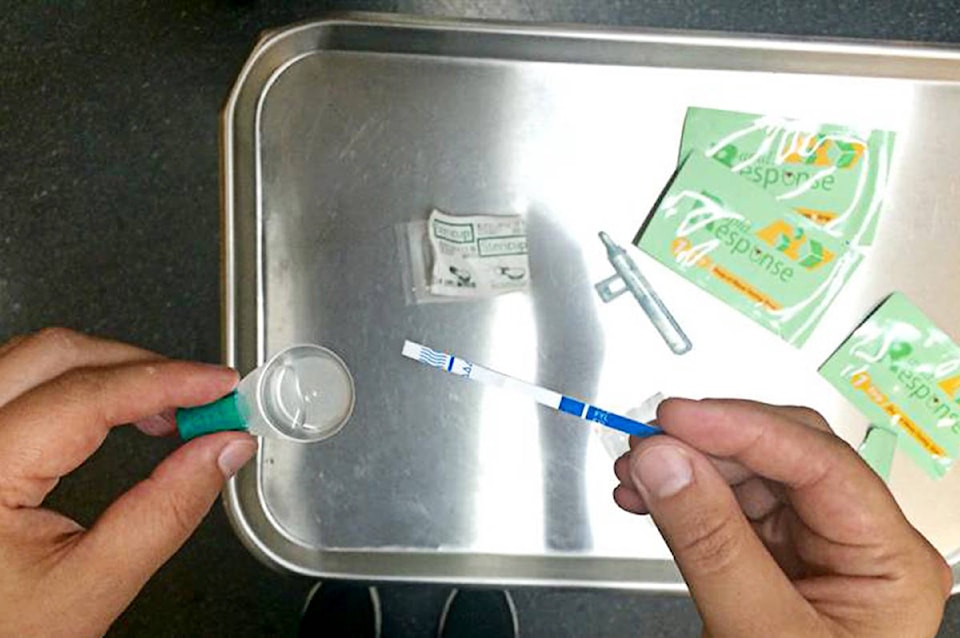As British Columbians using drugs alone continues to be one of the biggest cruxes in the ongoing overdose crisis, health officials are hoping take-home drug testing kits will help save lives.
READ MORE: Carfentanil, an opioid more toxic than fentanyl, linked to more deaths in B.C.
Both the Vancouver Coastal Health and Interior Health authorities announced a partnership with the BC Centre for Disease Control this week, which will include piloting take-home kits for users to check their drugs and safely use alone.
Since 2016, 80 per cent of overdose deaths have occurred indoors, according to the BC Coroners Service.
Mental Health and Addictions Minister Judy Darcy said in a statement that using alone increases risk of death “amidst a toxic, unpredictable and illegal drug supply that is taking three to four lives every single day.”
The kits will be available at overdose prevention sites and safe consumption sites in Vancouver, Kamloops, Cranbrook, Merritt, Nelson, Vernon, Kelowna and Penticton.
Inside each kit includes five fentanyl test strips with instructions on how to use them. These tests were implemented at all overdose prevention sites in B.C. in late 2017 to combat the illicit drug behind 87 per cent of the 1510 fatal overdoses last year. Since then, more than 500 people monthly test their drugs at the various sites across Vancouver.
READ MORE: B.C. launches new drug-checking program, expands fentanyl testing
| BC Coroners Service data available on May 15, 2019. |
Researchers will compare the impact of the take-home tests versus drug checking services already offered at Vancouver-based sites, including how many strips come back positive for fentanyl.
“Using the test strips will allow people to identify if there is fentanyl in their drugs so they can make informed decisions about how to reduce their risk of overdose,” said Dr. Jane Buxton, Medical Lead for Harm Reduction at the centre.
“Although the test strips do not detect all fentanyl analogues, they are another tool that we can use to engage with people who use substances and discuss with them how they can reduce harms.
“After testing their drugs, people may choose to use less, to use with a friend, or not use the drug at all. And, of course, key to staying safe even with access to test strips is to be trained to respond to an overdose and have a naloxone kit with you at all times.”
ALSO READ: Canada first in the world to approve injectable hydromorphone to treat opioid addiction
Buxton added that research so far has shown that when drugs come back positive for fentanyl, drug users are more likely to reduce their dose.
From January to the end of March this year there have been 268 deaths, with a record-number caused by carfentanil – an illicit opioid used for pain management on elephants and 100 times more deadly than fentanyl.
@ashwadhwani
ashley.wadhwani@bpdigital.ca
Like us on Facebook and follow us on Twitter.
